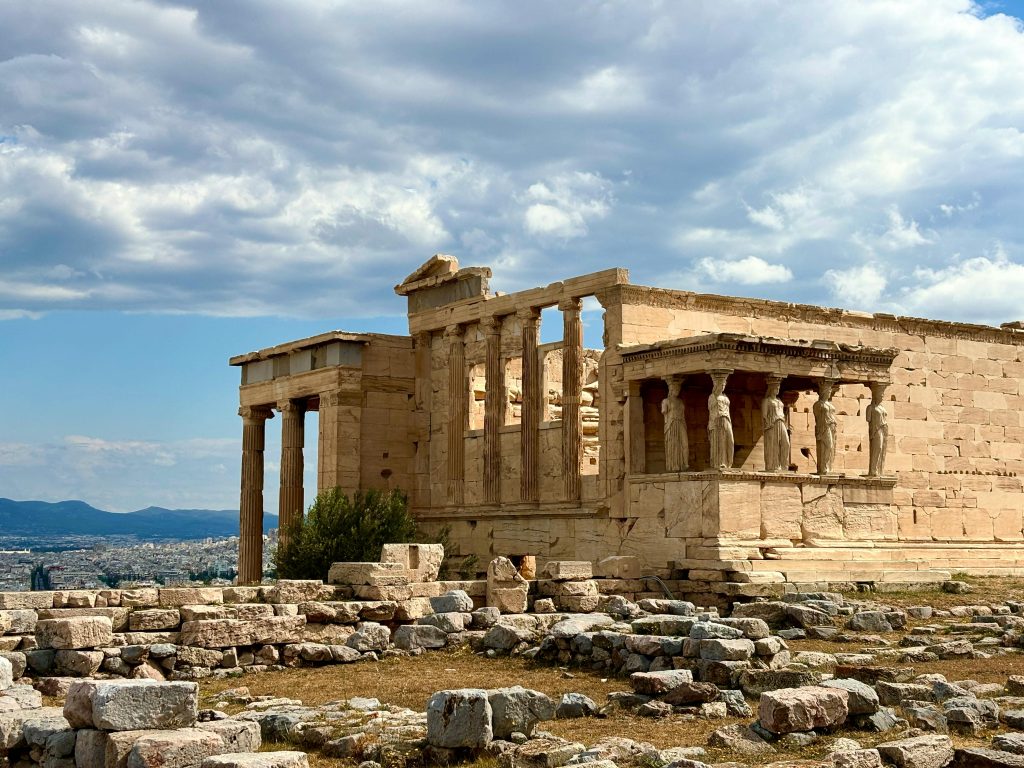Table of Contents
The Marvels of Ancient Greek Architecture: A Testament to Timeless Grandeur
Ancient Greek architecture stands as one of the most influential and enduring legacies of classical civilization. From the iconic Parthenon in Athens to the awe-inspiring Temple of Apollo at Delphi, Greek architecture has not only shaped the aesthetic standards of the Western world but has also profoundly influenced the development of art, culture, and society.

Photo by Pexels
Key Features of Ancient Greek Architecture
Greek architecture is characterized by its emphasis on symmetry, proportion, and harmony. The architects of ancient Greece were guided by a deep appreciation for mathematical precision and an understanding of human scale, creating structures that are both visually stunning and functionally sound. The following are the defining features of Ancient Greek architecture:
1. The Orders: Doric, Ionic, and Corinthian
The most recognizable aspect of Greek architecture is its use of architectural orders. The three primary orders—Doric, Ionic, and Corinthian—each have distinct characteristics that have been replicated and adapted throughout history. The Doric order, known for its simplicity and strength, is the oldest and most austere. The Ionic order is more elegant, with slender columns and scroll-like volutes. The Corinthian order, the most ornate, features elaborate capitals decorated with acanthus leaves. These orders were not just decorative but also served structural purposes, providing stability and support to the buildings they adorned.
2. Temples and Sanctuaries
Temples were the most significant and widespread building type in Ancient Greek architecture. These structures were not merely places of worship but also symbols of civic pride and religious devotion. Greek temples were typically rectangular, with a central chamber (cella) housing the deity’s statue. The Parthenon, dedicated to Athena, is perhaps the most famous example, showcasing the perfect harmony and balance that Greek architects strived to achieve.
Sanctuaries, such as the one at Olympia, were complexes that included multiple temples, altars, and other religious buildings. These sites were not only religious centers but also venues for athletic competitions, such as the ancient Olympic Games, highlighting the Greeks’ integration of religion, culture, and sport.
3. Theater Architecture
Theater was a crucial aspect of Greek culture, and its architectural contributions are no less remarkable. Greek theaters were typically built into hillsides, using the natural landscape to create a tiered seating arrangement that provided excellent acoustics and visibility. The Theater of Epidaurus, renowned for its perfect acoustics, is a prime example of how Greek architects combined functionality with aesthetic beauty.
Iconic Structures of Ancient Greek Architecture
1. The Parthenon (Athens)
The Parthenon, constructed between 447 and 432 BCE, is the epitome of Doric architecture. Situated on the Acropolis of Athens, this temple was dedicated to the goddess Athena and is considered a symbol of the power and cultural achievement of ancient Athens. Its proportions, intricate sculptures, and innovative use of optical illusions (such as the slight curvature of the columns) have made it a masterpiece of classical architecture.
2. The Temple of Apollo (Delphi)
The Temple of Apollo at Delphi was a central part of one of the most significant religious sanctuaries in the Greek world. Delphi was believed to be the center of the world, and the temple housed the Oracle of Delphi, a prophetic figure consulted by leaders and citizens alike. The temple’s architecture reflects its sacred significance, with its imposing columns and refined details embodying the spiritual and cultural importance of the site.
3. The Erechtheion (Athens)
Another remarkable structure on the Athenian Acropolis is the Erechtheion, known for its complex and asymmetrical design. The temple is famous for its Porch of the Caryatids, where six draped female figures serve as supporting columns. This innovative use of sculptural elements in architecture demonstrates the Greeks’ skill in blending art with structural engineering.
The Legacy of Ancient Greek Architecture
The impact of Ancient Greek architecture extends far beyond the borders of Greece and the confines of the classical period. The principles of Greek architecture have been emulated and adapted throughout history, from the Roman Empire to the Renaissance and beyond. Even today, elements of Greek design are visible in modern architecture, from government buildings to cultural institutions, underscoring the timeless appeal and enduring influence of this ancient art form.
Greek architecture’s emphasis on order, beauty, and functionality has left an indelible mark on the built environment. It continues to inspire architects and designers, reminding us of the importance of creating spaces that are not only structurally sound but also aesthetically pleasing and culturally meaningful.
The marvels of Ancient Greek architecture offer a window into a civilization that valued harmony, beauty, and human scale. From the grandeur of the Parthenon to the serene beauty of the Temple of Apollo, these structures stand as testaments to the ingenuity and creativity of the ancient Greeks. As we continue to draw inspiration from their architectural achievements, we are reminded of the lasting legacy of a culture that shaped the very foundations of Western civilization.


No responses yet